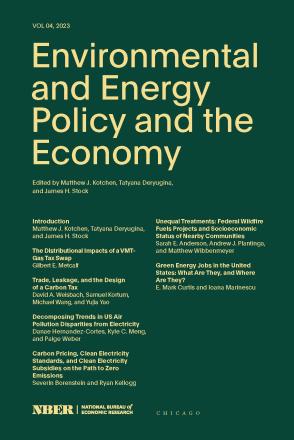Decomposing Trends in US Air Pollution Disparities from Electricity

You may be able to download this chapter for free via the Document Object Identifier.
This paper quantifies and decomposes recent trends in US PM2.5 disparities from the electricity sector using a high-resolution pollution transport model. Between 2000 and 2018, PM2.5 concentrations from electricity fell by 89 percent for the average individual, more than double the decline rate in overall US ambient PM2.5 concentrations. Across racial/ethnic groups, we detect a dramatic convergence: since 2000, the Black-White PM2.5 disparity from electricity has narrowed by 95 percent and the Hispanic-White PM2.5 disparity has narrowed by 93 percent, though these disparities still exist in 2018. A decomposition reveals nearly all of these disparity trends can be attributed roughly equally to improvements in emissions intensities and compositional changes in electric generators, with small contributions from scale and residential location changes. This suggests both local air pollution policies and recent coal-to-natural gas fuel switching have played major roles in reducing US racial/ethnic pollution disparities from electricity. While we detect similarly large PM2.5 improvements for the average low and high income individual, PM2.5 disparities by income are relatively small, with little change over time.
-
-
Copy CitationDanae Hernandez-Cortes, Kyle C. Meng, and Paige Weber, Environmental and Energy Policy and the Economy, volume 4 (University of Chicago Press, 2022), chap. 3, https://www.nber.org/books-and-chapters/environmental-and-energy-policy-and-economy-volume-4/decomposing-trends-us-air-pollution-disparities-electricity.Download Citation


